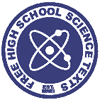| |
 |

RW James Building, University of Cape Town
Rondebosch 7701, South Africa
fhsst-admin-priv@nongnu.org
+27 21 650 3366
NPO Registration Number: 037-269-NPO
|
|
| What is the Free High School Science Textbook? |
| The FHSST is the contribution of a group of young scientists towards furthering science education in South Africa. We aim to provide a free science textbook for Grades 10 - 12 to all South African learners. |
| Administration |
| Visit our project administration web pages hosted on Savannah. |
|
LaTeX Standards | Setting up LaTeX on Windows
LaTeX Standards
Who can edit what?
The "state" of a file is given in a comment field near the top of each file. It can be one of:
- % state: not maintained
- % state: editable by all, maintained by X
- % state: currently in edit by Y, maintained by X
- % state: stable, maintained by X
Not maintained
If a file is not maintained, you can request to become the maintainer by emailing the FHSST-Authors mailing list. You can assume temporary maintainer-ship for 7 days (if you have CVS write access). If there are no objections after this time, you are the maintainer. It is very likely that any content submitted to an unmaintained file will be accepted. You can just submit the changes via CVS (if you have write access) or email the FHSST-Authors mailing list.
Editable by all
It is unlikely that content to a file with this state will be rejected, so you may contribute to CVS (if you have write access) or email the maintainer. It is generally considered polite to inform the maintainer before editing their file.
Currently in edit
It is very unlikely that content will be accepted to a currently in edit file. If you really feel like you have something to contribute to such a file, you must email both the editor and the maintainer in order to avoid wasting time working on a file which may currently be undergoing a serious overhaul on somebody else's machine.
Stable
Any changes made to a stable file must be agreed upon by all the FHSST authors, and such changes must also be compatible with the legalities placed upon a published school textbook. This pretty much means that only typos and incorrect solutions to problems will be accepted.
The first 3 states are obvious, however the change to stable is very strict. A file only becomes stable when it is ready for printing and use in a school. For it to reach this stage it should have proved its worth in several real world tests and must have been read by several authors. When a maintainer finally decides that a file is worthy and submits it for stable status, they must email the FHSST-Authors mailing list with the request.
All problems and objections (by any author) must be worked out, and the maintainer has to re-apply for stable status when all the problems are worked out. This way everyone agrees to every file that is stable. All core members must email the list agreeing that the file is "stable". Also, there must be no objections filed against a candidate for 7 days.
If you want to add a chapter please notify the admin team via fhsst-admin-priv@nongnu.org and wait for a response before adding it. We try to keep things relaxed but some moderation is definitely required.
Labels
Every section, subsection, subsubsection, equation and figure must have a label tag. Equations must begin {eq:} and figures {fig:}. The next part of the label must be consistent throughout the file and is the chapter's label appended with a colon. e.g. "physics/collisions.tex" uses the label "pc" throughout (p for physics, c for collisions), so equations are all labelled {eq:pc:description}. The description part is up to the author to decide upon, but try to keep it short and descriptive.
References
In true LaTeX fashion, try not to ever refer to "the figure below", but instead use a \ref tag with the equation or figure's label. In very exceptional circumstances (very small figures) it may be best to put the figure inline with the text. In that case you may use
some text
\begin{figure}[H]
pstricks jig
\end{figure}
\noindent
some more text
to achieve inline figures.
PSPictures
Although it is possible to have a pspicture without a figure environment, it is best that all pspictures be inside a \figure{} environment.
Notation
We must stick to the SA syllabus very strictly with regards to notation. In order to use a consistent notation throughout the book, you should use the following macros for certain symbols:
\ms = meters per second
\momen = momentum
\kener = kinetic energy
(need more)
check out the defines.tex file to see more. (Please add more using other/notation.tex as a guide)
Homemade Environments
We have developed many environments to make writing easier. Here are a few:
\nts{}
Use this to leave "Notes to Self""
\pwex{} (physics) \mwex{} (maths) \cwex{} (chemistry)
Use these for worked example environments. Use \westep{} for each new step of the solution.
check out the defines.tex file to see more.
|
|